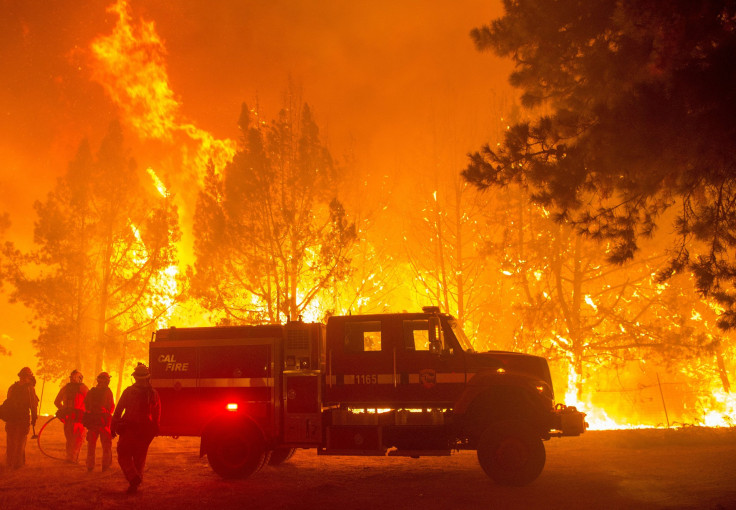Climate Change Helps Forest Fires Spread In Western US, Study Says

Man- made climate change has made forests in western U.S. drier and hence easier to burn since 1984, researchers have found. The study, published Monday in the journal Proceedings of the National Academy of Sciences, said high temperatures and aridity have caused forest fires to cover an extra 16,000 square miles more than they originally would have.
Since the 1980s forest fires have been on a sharp rise in terms of the area it covers, the number of large fires and the length of the fire season. At least 3 million acres burned down in the U.S. this year. But scientists believe the worst is still to come.
“No matter how hard we try, the fires are going to keep getting bigger, and the reason is really clear,” the study’s co-author Park Williams from Columbia University’s Lamont-Doherty Earth Observatory said in a statement. “Climate is really running the show in terms of what burns. We should be getting ready for bigger fire years than those familiar to previous generations.”
Researchers from Columbia University and the University of Idaho said the drying out of the land drives fires. The increase in fires since the 1980s can be partly attributed to natural changes in the climate over the Pacific Ocean. It can also partly be attributed to the actual putting out of fires in the western U.S. region. Firefighters, by putting out the fires, allow the area to accumulate more dry fuel. This dry fuel catches fire and causes more destructive fires.
“We’re seeing the consequence of very successful fire suppression, except now it’s not that successful anymore,” the study’s lead author John Abatzoglou from the University of Idaho said in the statement.
Researchers used eight different systems to measure forest aridity. They compared this data with observations of actual fires and determined the existence of a strong relationship between dryness of fuel in the land and the area of the land affected by the fire.
Then they studied large-scale climate models to determine how much of this resulted from man-made climate change. They found that 55 percent of fuel aridity can be attributed to climate change. Global warming has played a key role in increasing fuel aridity since 2000 and researchers predicted that this role will continue.
The study does not focus on western grasslands, which have also seen more fires. But Abatzoglou said there isn’t enough evidence to prove the effect of climate change on these fires.
However, after a certain point, fires will become too fragmented for them to spread so easily. Due to lack of enough fuel to help the spread, the fires will shrink.
“There’s no hint we’re even getting close to that yet. I’d expect increases to proceed exponentially for at least the next few decades,” Williams said and added that in the meantime, people should concentrate on “getting out of fire’s way. I’d definitely be worried about living in a forested area with only one road in and one road out.”
© Copyright IBTimes 2025. All rights reserved.





















